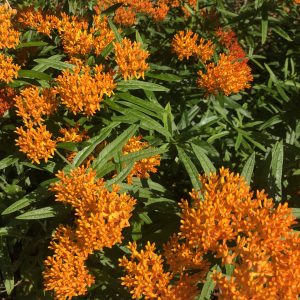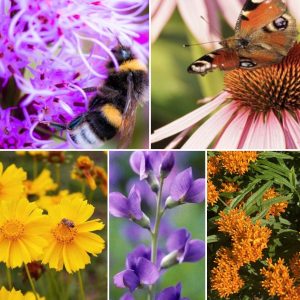Eryngium Sea Holly Blue Thistle Seeds – Create a Stunning Garden Display with This Pollinator-Friendly Perennial
Elevate your garden or meadow with the architectural beauty of Eryngium planum, commonly known as Sea Holly Blue Thistle. This steely blue perennial offers more than just visual appeal—it’s a magnet for late-season pollinators and an essential plant for ecological gardeners.
Why Choose Sea Holly Blue Thistle?
Dramatic Architectural Form: Sea Holly stands out with its spiky blue flower clusters and wiry stems, shimmering with a silvery-steel hue.
Pollinator-Friendly: Butterflies, bees, and other pollinators flock to its abundant flowers, particularly in late summer and fall.
Drought Tolerant: Thrives in full sun and well-drained, poor soils, making it perfect for dry gardens, meadows, or prairie-style landscapes.
Wildlife Resilience: The wiry stems and spiky flowers are largely deer and rabbit-resistant, ensuring longevity in your garden.
Self-Sowing Charm: Eryngium planum self-seeds freely without becoming aggressive, ensuring a lasting display year after year.
Versatile Beauty: Makes an eye-catching addition to garden borders, cottage gardens, and wildflower meadows. Also ideal for dried flower arrangements, holding its blue hue beautifully.
Growing Tips for Eryngium Sea Holly from Seed
Sea Holly seeds are easy to grow and perfect for beginners and seasoned gardeners alike. Here’s how to get started:
1. Direct Sow: Scatter seeds in a prepared seedbed in late fall or early spring. Allow nature to assist with the cold stratification process.
2. Cold Stratification Indoors: Place seeds in a refrigerator until ready to sow. Sow finely and lightly cover with fine compost.
3. Pots & Containers: Use pots to start seeds indoors or in a sheltered cold frame. This method allows easy mobility to break dormancy.
4. Care for Seedlings: Once seeds germinate in batches, pot them on carefully to avoid disturbing emerging roots. Transplant into sunny spots with poor soil for best results.
Additional Benefits
Long Flowering Season: Blue sea holly blooms from late summer through fall, providing ongoing interest and pollen resources.
Seed Heads for Wildlife: After blooming, the dried seed heads become a food source for birds in fall and winter.
Pairing Plants: Create an ecological haven by planting alongside Rudbeckia, Goldenrod, and Fall Asters for a colorful, pollinator-friendly display.
What’s in the Pack?
Each pack contains 25+ freshly hand-collected seeds, harvested from our pollinator-friendly plants. Refrigerated for 4+ weeks, these seeds are ready to grow into vibrant, eco-friendly garden beauties.
Why Grow Native Plants?
Native plants like Sea Holly play a critical role in supporting ecosystems. By planting natives, you provide food and habitat for pollinators, birds, and other wildlife, helping combat the effects of habitat loss and ecological destruction. Even a small garden or balcony can make a big difference.
Order Your Eryngium Sea Holly Blue Thistle Seeds Today
Join the movement to create a patchwork quilt of native wildflowers, preserving biodiversity and enhancing the beauty of your garden. Together, we can make a small yet impactful difference for our planet.
Let’s protect and celebrate nature—one seed at a time. 🌱









Reviews
There are no reviews yet.